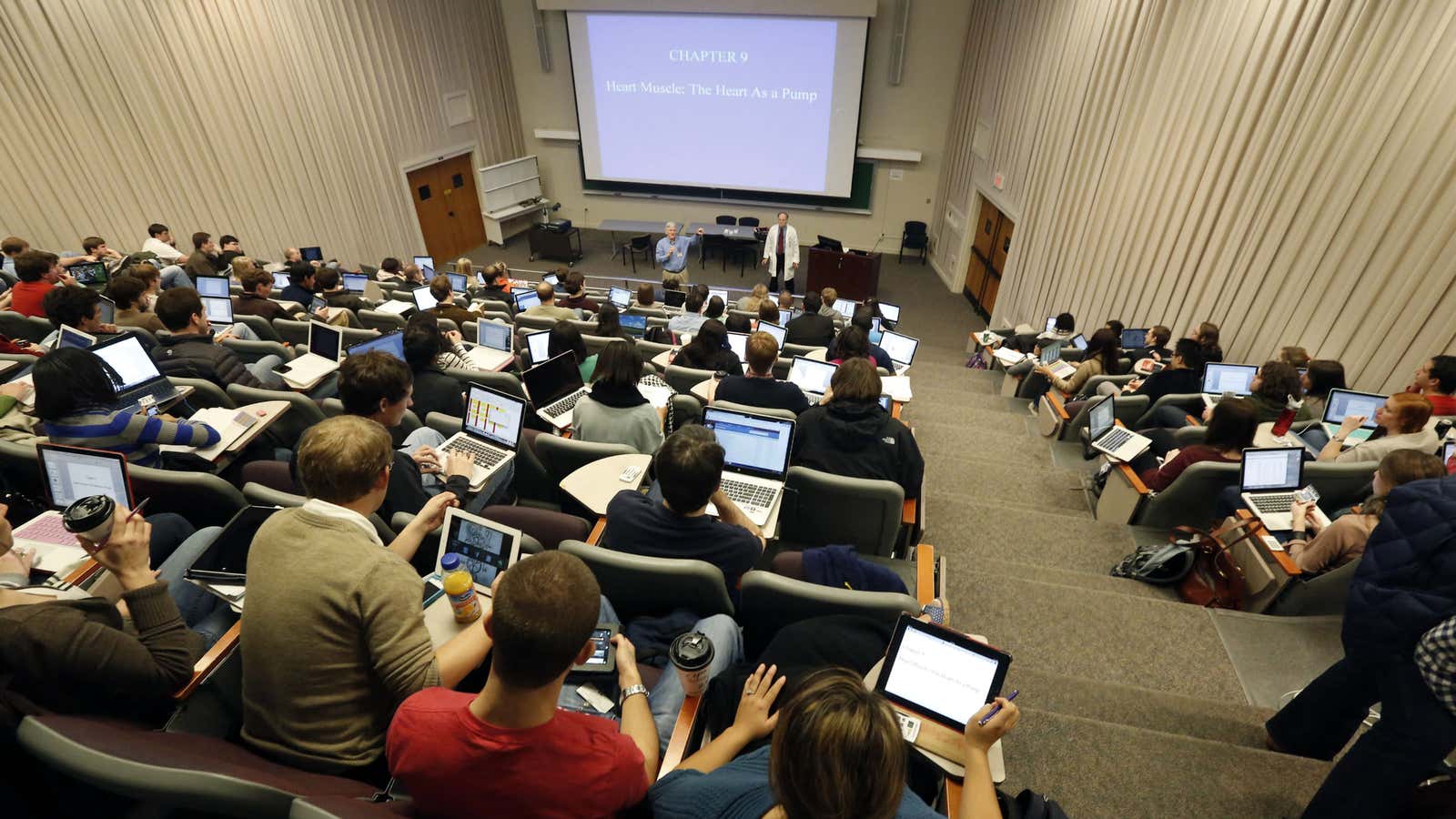I wish I could say that’s because of my teaching panache as a visual journalism professor at UMass Amherst. But the reason is more universal. By creating a blended learning classroom—and incorporating external Massive Open Online Courses (MOOCs)—I can now confidently outsource what’s boring, remedial, monotonous and binary to self-guided online lessons.
This works. After teaching my university’s first MOOC last summer on basic web design and development, I witnessed how the lessons were most useful in a far less massive environment: a modestly cramped classroom of 15 students.
Students in this blended course, called Web Design for Journalists, watched the MOOC videos and completed self-guided exercises on those technical topics as homework. If students had additional questions, we resolved them in class. It was a more successful workflow than listening to me drone on about CSS specificity and jQuery plugins.
“If I had a question, I would pause the video and replay it, and that was really nice,” said Rebecca Humphrey, one of the 15 students and a 2014 UMass Amherst graduate. “I didn’t have to read old messy notes.”
Students produced better websites because they could return to videos about things like customizing web templates and solving CSS layout problems. In addition, there were three extra weeks of class time to practice data visualization, allowing students to report a data journalism project about campus relationships. Put simply, these 15 students got more bang for their buck.
“I hate lectures. Within the first five minutes, I am checked out,” said Humphrey, a student who prefers using class time for in-depth discussions. “Digital stuff is always better than someone talking at me.”
From cellular mitosis to using semicolons, most subjects have remedial material that is important to know and difficult for professors to translate into a creative lecture or an active discussion. If these dull-but-necessary lessons migrate out of the classroom, professors can use the extra time for more creative, complicated and nuanced topics.
With more than 1,200 MOOCs on everything from dog psychology to Joan of Arc, many traditional classrooms could benefit from this kind of blended learning. Why not assign the basics in a curriculum to MOOCs and other self-guided online modules? The class grade can easily reflect completing these assignments.
Higher education has buzzed with the promise of blended learning and flipped classrooms since the 1990s. What’s changed is Learning Management System (LMS) technologies like Moodle that let teachers see when students are participating and succeeding in the online lessons. Online video and sophisticated web projects are easier to produce than ever.
Will students actually learn? After all, consistently high dropout rates underlie much of the contemporary MOOC criticism, including from Udacity founder and early MOOC evangelist Sebastian Thrun. Only about 15% of the 1,000 students enrolled in my MOOC completed the course, for example, while the most recent data at my University shows almost 90% of freshmen return for their sophomore year.
From a student point of view this dropout rate makes sense. Who among us follows through on all the things we’d like to learn how to do? But whether students unaffiliated with an institution finish a free class is irrelevant to the question of whether these classes could work for enrolled students.
Data suggests yes: a 2010 meta-analysis commissioned by the US Department of Education found that students performed “modestly better” in an online environment compared to a face-to-face environment. The clearest data point showed that students do best with helpful professors in blended classrooms.
“What we do is worthwhile because we do it face-to-face,” wrote Amherst College professor John Drabinski after the faculty voted in 2013 to reject joining the edX MOOC alliance.
Surely that can be true. But online systems can benefit with face-to-face interactions. Consider that one-third of Americans meet their life partner online, which would have been unthinkable a generation ago. Higher education needs to push against the mythology of what it means to be a good teacher.
We welcome your ideas at ideas@qz.com.
